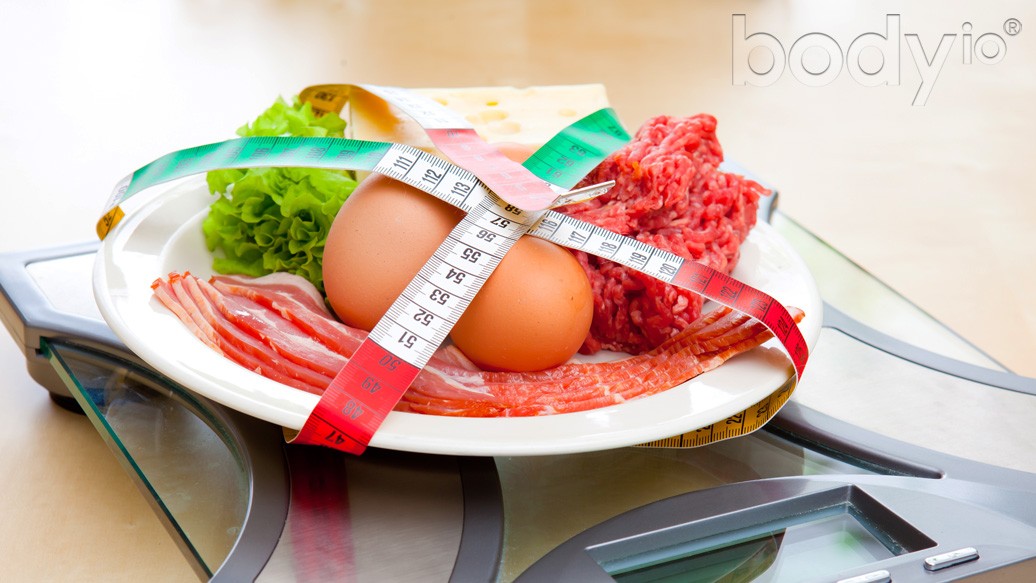love food and I love flavor, but most importantly, my best friend and partner in crime —my tummy—loves to feel satisfied. If he’s happy, then I’m happy. Although I’ve trained myself to eat lightly throughout the day, reaching that place where you don’t feel completely stuffed, but also not empty, can sometimes be tricky. It’s a battle between the physiological and the psychological– and it’s not an easy one.
In my latest article, “Mindful Eating: Key to Weight Management”, I discussed how powerful mindful eating can be for achieving your health goals. However, I would also like to highlight that in addition to mindful eating, controlling portion size is every bit as important. They go hand-in-hand —the yin and yang of a healthy approach to eating.
Check Yourself Before You Wreck Yourself
Now, before you go thinking: ‘I know how to control my portions; this is nothing new’, I have to challenge you…Do you really know how to control your portions? For example, you may be thinking that you’ve been eating 4 ounces of smoked pulled pork, when in fact it’s been 6 ounces every time. An extra ounce or two, in a few meals each day can definitely begin to add up. When was the last time you actually checked your portions?
Although I’m not a huge fan of a life sentence devoted to weighing and measuring, I am a fan of the occasional tune-up. Every other type of machine needs a check-up, including your body, so weigh in from time to time and ensure that your eyeball method hasn’t been deceiving you. This is one example of practicing portion control.
While reading Coach Dain’s article, “Shortcuts to Nowhere”, I couldn’t have agreed more with many of the points he made. I’m going to elaborate on some of the points that relate to our topic. I’ll also provide some additional tips on how to exercise portion control. These tips will help you succeed while using Carb Backloading™ and The Carb Nite® Solution, and can be applied to any nutrition plan.
Six Tricks to Success:
1) Drink Water, Especially Before A Meal.
Research has shown that those who record and are mindful of water intake prior to eating will consume less at mealtimes and will feel more fuller[1, 2].
Try it: Drink 16 ounces of water before your meals and drink water as often as possible.
2) Add Volume by Increasing Non-Starchy Vegetables.
You can’t go wrong with leafy greens. Combining your favorite protein, with a good fat, and placing it over a bed of mixed greens or veggies is a great way to add volume and bulk, without adding extraneous carbohydrates and calories.
Try it: If you want to feel “satisfied”, adding veggies like broccoli, Brussels sprouts, asparagus, zucchini, cabbage, or bell peppers will do the trick.
3) Add Rich Flavors, But In Small Amounts.
If you’re an individual who tolerates cheese and you enjoy it in your meals, then by all means, keep it in! However, do so within reason. Watch the amount and replace some of your usual cheeses with a cheese that may have more flavor in a smaller amount. For example, many people often choose cheddar cheese because it’s convenient and familiar. Although it’s delicious, think outside of the box. Cheeses like feta, blue cheese, and Parmesan shavings are very flavorful and you only need half the amount to get the same rich satisfaction on your palate.
Try it: Next time, instead of 1 ounce of cheddar cheese, swap it for 1/2 ounce of feta, Parmesan shavings, or blue cheese.
4) Spend 1 Week Weighing and Measuring.
Even if you have been at this for years, you need to hold yourself accountable and make sure your perception of what a 6-ounce cut (170 grams) of a juicy grilled fillet steak actually looks like is accurate. Our suggested portions are not the same as they were in the 1950s. It’s your responsibility to make sure you don’t fall into the modern-day mindset of bigger is better.
Try it: Take out your scale and your measuring tools, and weigh your food for one week. Recalibrate your “eyeball” measuring device.
5) Pre-Portion Your Snacks Immediately.
If you purchase things in bulk, such as ground beef, almonds, beef jerky, or any other food, portion it out in advance.
Try it: Take your jar of nuts, find the 1/4 cup measuring scoop, and place them in snack-size baggies as soon as you purchase them!
6) Go To Bed!
This has always been my greatest struggle. I often get a surge of energy at night, and often find myself productive when it comes to any computer-based work. However, I’ve made a conscious effort to do my best to shut down my electronics by 10:00pm. There are many benefits of a good night’s rest. Getting enough rest may even help with portion control. Research has shown that those who have had less sleep have an increased energy intake, particularly at breakfast time[3].
Try it: Make sleep a priority. Set boundaries and shut off all your electronics at a designated time every night.
Now that you have these tips in mind, it’s Go Time!
These diet and lifestyle tips will help you in your journey towards a lifetime of good health. It’s all about creating habits. If you begin to integrate some of these tricks, success will follow. Be honest with yourself, investigate your portions, and take the initiative by planning a few steps ahead. Be a problem seeker, rather than a problem solver. Just Try It!
[expand title=”References (click to expand)”]
- Akers, J.D., et al. “Daily Self-Monitoring of Body Weight, Step Count, Fruit/Vegetable Intake, and Water Consumption: A Feasible and Effective Long-Term Weight Loss Maintenance Approach.”Journal of the Academy of Nutrition and Dietetics. May 2012; 112(5), 685-692.
- Davy, B. M., et al. “Water Consumption Reduces Energy Intake at a Breakfast Meal in Obese Older Adults.” Journal of the American Dietetic Association. July 2008; 108(7), 1236-39
- Hogenkamp, P.S., et al. “Acute Sleep Deprivation Increases Portion Size and Affects Food Choice in Young Men.” Psychoneuroendocrinology. September 2013; 38(9), 1668-74.
[/expand]












